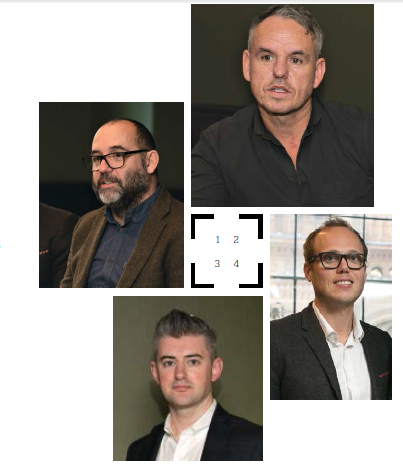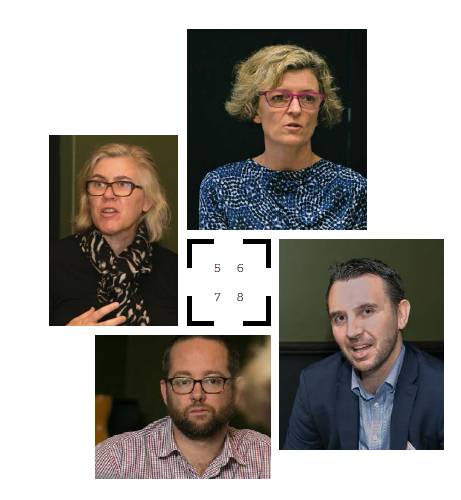
This first appeared in the first monthly AdNews issue. To read it hot of the press subscribe to the digital version of AdNews on desktop, Apple or Android here for $5.99. You can also subscribe to the premium print edition here.
Digital has revolutionised out of home as it has all other forms of advertising. It’s one of the most exciting channels out there, so why are the boundaries so seldom pushed by Australian brands and their agencies?
Out of home is one of the fastest growing segments of media. In its sixth consecutive year of growth in 2015, revenue increased 17% to $678 million. In the first half of this year alone, revenue reached $418.5 million. Digital accounts for 37.5% of that while just four years ago it was only 7.5%.
Digital has transformed outdoor from a static to a dynamic and interactive, high-tech medium. It has more measurement metrics than ever before, but many of its capabilities, such as proximity marketing, facial recognition, contextual and day-part targeting, geo-targeting and data triggers, are being under-utilised.
AdNews partnered with VMO (formerly Val Morgan Outdoor) to explore the creative possibilities digital out of home (DOOH) offers brands and how marketers and their creative agencies can maximise the channel’s capabilities. The roundtable was hosted by Paul Butler, general manager of sales and marketing, VMO, Nicolette Onsley, marketing director VMO and VMO managing director Anthony Deeble.
Are there perceptions that DOOH is a traditional medium and does that lead to a misunderstanding of the capability in terms of technology?
Darren Spiller: I judged outdoor at Cannes a couple of years ago and I thought it would be boring, but it really blew my mind. I think it’s actually the most exciting medium that we have to play with these days; the definition of what DOOH is probably isn’t appreciated in the market. Digital outdoor is a good opportunity to connect the physical world and the digital world, but the conversation is skewed towards large format and it’s being underplayed in terms of capability. I think we should stop calling it outdoor and call it something else.
James Griffiths: A lot of the briefs that are coming in for outdoor are just about resizing for an outdoor site when in fact there’s a huge opportunity to tell a larger and a more in-depth story and one that’s actually related to the position of that ad. That’s something that probably isn’t utilised as much as it could be. That probably shows that clients don’t have that understanding of what digital outdoor can do.
Anne Gately: I think that’s true for us. I think the process needs to change in terms of viewing it as a digital channel as opposed to outdoor. Partly it comes from how we determine our budget. DOOH is quite a different use of outdoor which we probably haven’t got our head around.
Paula Keamy: As a creative, I’ve always loved outdoor. It’s the simplest medium, but that’s from a classic below the line perspective. I'm really interested, now that it’s becoming targeted for the first time, how we can use integrated data.
What are the barriers to getting big creative ideas in digital outdoor across the line?

1. Gary Peace Head of communication planning, The Monkeys 2. Darren Spiller Chief creative officer, DDB Melbourne 3. Ryan Hedditch Group agency director, Posterscope 4. James Griffiths Creative director, Ideaworks GPY&R
Keamy: Every creative person thinks they can do anything, anywhere, but we’re often too late in the chain and the money is already being spent in all the standard media by the time the creative department gets hold of it. The problem is getting more involved at the media agency side right upfront. That’s how we’re going to unlock better ideas.
Ryan Hedditch: Probably clients need to be a little more willing to learn along the way, but I think the digital market here has advanced so quickly, with so much investment from some big players creating new inventory, the creative and media industry hasn’t had time to catch up and realise the opportunity. In the UK it was probably a slower burn.
Brendan Forster: We had a big idea for the Olympics that didn’t get up because of complexity. It was trying to contextualise Olympic athletes’ efforts through both traditional and DOOH. We had probably around about 15 to 20 examples and the client loved every single one, but then in the end when we tried to execute, cost and time got in the way. Things like that get expensive and hard and sometimes the medium isn’t ready for it and then it becomes a special build and then it goes into another bucket [budget]. So, when you try to be inventive, it can sometimes end up in the too hard bucket.
Gary Peace: I think it talks to the value of having channel planning and creative planning partners working together. It means you can start to bring opportunities to bear in parallel so that media concepts are presented alongside creative development. It becomes a virtual circle and I think as the world fragments the need to have channel planning within a creative agency increases for that very reason.
Paul Butler: The perception is slowly changing from large format outdoor to the reality that there are small screen networks that make a more intimate connection and can be more powerful.

5. Paula Keamy Associate creative director, M&C Saatchi 6. Anne Gately Media buying and communications director, IAG 7. Brendan Forster Executive creative director, Clemenger BBDO Sydney 8. Toby Dewar Head of media, Westpac
A lot of the best in class examples are special builds that formed the basis of PR-led digital video. Is that the only way to get scale from DOOH?
Gately: It feels like the experiential activation element is what you need to get the scale.
Forster: Often the video of the outdoor experience takes off and gets the millions of views. It’s always hard to strike that balance between things that truly use a DOOH network and its technology and capabilities to target or use the location, not just re-use a display ad … or things where the video is what has the highest impact.
Toby Dewar: If you do something interactive on a digital screen, a few people use it and the brand gets some value out of that, but the investment compared with the number of people who interact with it, frankly, it just becomes prohibitive. I like the fact that outdoor can be positioned as a trigger for conversation and then other mass media adds value to the conversation and a lot of the way these projects are talked about is as a catalyst for conversation or a content opportunity.
Outdoor is more measurable than ever thanks to digital so how is this impacting how it’s used?
Hedditch: When you personalise anything online, retargeting increases and everyone knows you get better conversions. I would hope we would see the same principle within DOOH. In the UK we’re at a point of scale within Postercope to be delivering contextually relevant, dynamic campaigns where we can measure if it helps to drive the brand message. We model in a virtual environment to understand people’s perceptions and the impact of contextually relevant ads on the roadside versus linear ads.
Gately: I'm interested in that ability to measure the impact contextualising has on brand measures. With the TV market the way it is, we’re all struggling now to get audiences and to have brand impact. For me, that could be enough to do a test to see if we can move the needle because we need to find other channels to complement our TV because it’s just not getting the audiences.
How can creatives and clients better tap into data?
Griffiths: We’re talking to clients about dynamic triggers to surface relevant pieces of advertising at the right time. A lot of that relies on the data the client has. If you take a retail business, it can be fascinating to plan and execute product features, benefits and price points over the course of a long period. There’s probably a very simple way to react to price promotions competitors are doing in DOOH.
Gately: There’s a great mountain of data but we just think of it for email marketing, we don’t really think of it for outdoor. How we use this fantastic medium in a targeted way is a whole new sandbox for us to play in.
Forster: Certain brands can do really fascinating and amazing things, but with something like beacons in outdoor we’ve got to be careful that it doesn’t go the same way as QR codes. It could have been a great technology, but we didn't do anything interesting with it. Beacons have the same potential in terms of all the data and personalisation, but the moment a brand or agency uses it in the wrong way and creeps people out at scale, it will ruin it. We should always have that in our mind.
What would you like to see in the future?
Hedditch: I’d like to see 50% of the Dentsu Aegis client base thinking about how they can smartly schedule their creative in DOOH, how they can use triggers such as audience information and insights, environmental and social triggers to surface the right messaging at the right time to enable mass personalisation.
Deeble: Programmatic is definitely where we’re heading and it’s part of the future. We’ve had a few good examples, but in truth no one in the world has cracked it in terms of being able to plug into exchanges. Potentially, we may well be first to market. We are investing quite heavily to be able to trade directly with the exchange, but we’d see ourselves at the premium end of video.
Griffiths: I think it’s really important to use outdoor to tell richer, more engaging stories not just thinking of it as a medium for print executions. But also, how we can make them a little more transactional? How can we use technology and mobile to tie up to sales?
This first appeared in AdNews first monthly issue. To read it hot of the press subscribe to the digital version of AdNews on desktop, Apple or Android here for $5.99. You can also subscribe to the premium print edition here.
Have something to say on this? Share your views in the comments section below. Or if you have a news story or tip-off, drop us a line at adnews@yaffa.com.au
Sign up to the AdNews newsletter, like us on Facebook or follow us on Twitter for breaking stories and campaigns throughout the day.

